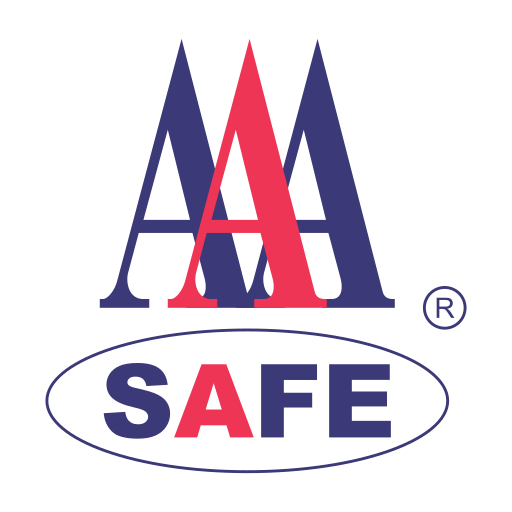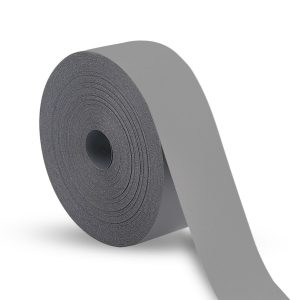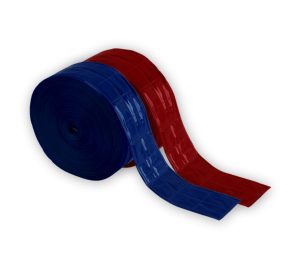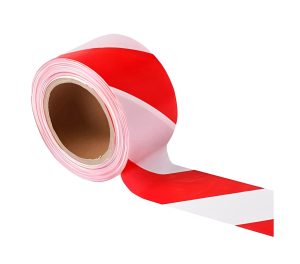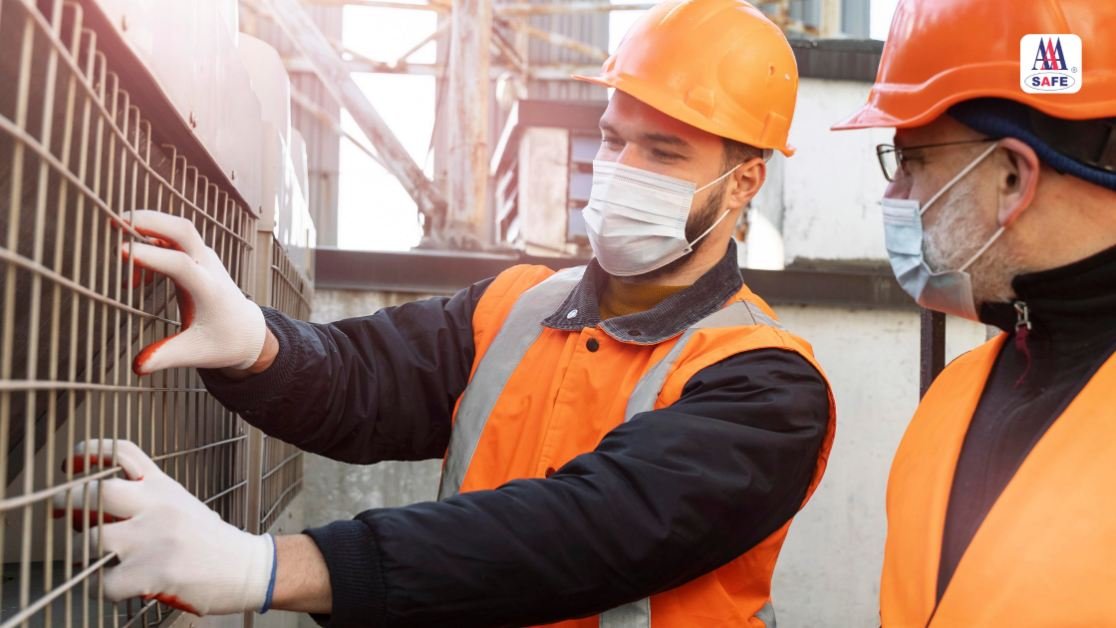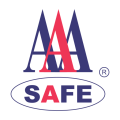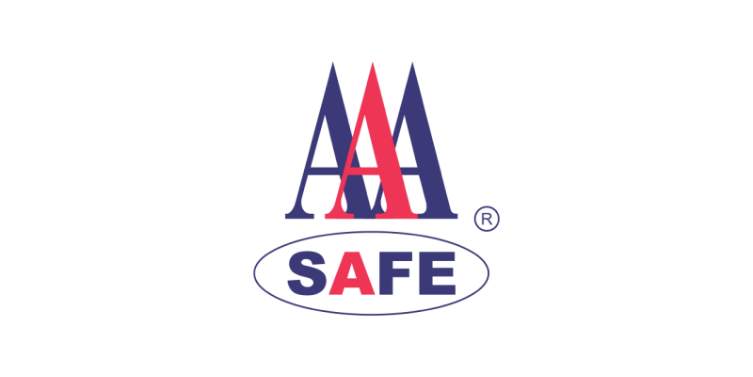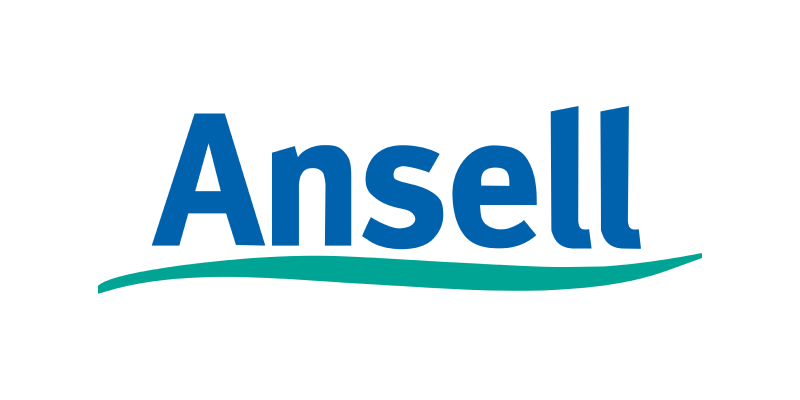Maintaining a tidy workspace is essential for safety. This is especially true in a variety of environments, including factories, warehouses, labs, and hospitals. The utilization of floor markings is essential as it guarantees worker safety by emphasizing potential hazards. Keeping things organized makes it easier to keep equipment where it belongs. When you are an employer, you are accountable for your own safety as well as the safety of your employees. Floor markings serve as silent protectors by pointing out potential hazards to employees. Let’s talk about it in more detail in this blog.
What is a Floor Marking Tape?
Safety tape, also known as floor marking tape is used on industrial floors and other surfaces to draw attention to important details and potential dangers with visible adhesive marking, or they are used to clearly mark the boundaries between various locations. They are widely utilized to increase efficiency, organization, and safety in manufacturing and warehousing facilities.
Where to Use Floor Markings?
Floor markings are applicable in all regions of the building. Businesses should ensure that their floor marking plans strike a balance between utilizing just enough floor markings to be useful and not using too many markings that the design becomes cluttered and unclear.
Aisles
Floor markings are a useful technique for aisle marking in the majority of facilities. In fact, OSHA only mentions the necessity of floor markings concerning aisles. Floor markers can be used in addition to aisles to assist ensure that cars are only driven in permitted directions.
Storage areas
It’s also a great idea to use floormarks to help organize things better. Creating boundaries around storage spaces will assist in preventing items from being placed inadvertently throughout the day. Because it will keep the area clean and cut down on wasted time and energy, this is an excellent example of a lean manufacturing strategy.
Hazards
Another useful method for identifying safety issues is to use floor markings. The next best course of action is to make people aware of the presence of safety dangers, even though it is preferable to remove them whenever feasible. Placement of floor markers around ledges, stairwells, and other spots that could pose a major risk to nearby individuals if they enter without caution are a few examples of these areas.
Types of Floor Marking Tape Available
Make sure you use the appropriate kind of floor marking tape if you decide to use it. The materials and adhesives used by premium floor tape manufacturers vary depending on the type of environment in which the tape is intended for use. Among the more preferred choices are the following ones:
- General floor marking tape
- Anti-slip tape
- Hazard floor tape
- Glow tape
- Floor marking shapes
What is a Floor Marking Tape?
A floor marking tape is a straightforward yet useful tool that improves organization and safety in various settings. Think of it like a type of tape made especially for flooring. Unlike other tapes, floor marking tape is strong and sticky, adhering firmly to the ground. People can securely navigate places because of the visual signals provided by its colours and patterns. You may as well call it a guide that directs everyone away from possible hazards, much like pedestrian road markers. Floor marking tape creates ordered walkways and distinguishes regions for diverse functions in locations like factories, warehouses, and hospitals. It’s a useful safety precaution with a clear objective.
Benefits of Using Floor Marking Tape
- High Visibility: Floor marking tape is highly visible, making it easy for people to locate and improving safety in a variety of environments.
- Numerous colours: Select the colour that best fits your requirements, bringing vitality and clarity to regions that have been defined.
- Easy to Apply and Quick: Tape application is quick and easy. Simple installation that requires no hassles for maximum effectiveness in any area.
- Sturdy and Long-Lasting: This tape is robust and long-lasting. It is durable for a long time and can withstand regular wear and tear.
Sticks to all surfaces: It adheres to any surface thanks to its versatile adhesive. No surface is off-limits, thus it can be applied with freedom in a variety of floor settings.
OSHA Floor Marking Standards
The Occupational Safety and Health Administration (OSHA) has rules and regulations in place regarding the use of floor markings in different settings. . Facilities can utilise these guidelines to choose where and how to apply floor markings to increase safety. These standards address a wide range of topics, including aisle and route standards, shop floor cleaning regulations, and much more.
Facility owners, managers, and safety professionals must consistently adhere to the OSHA floor marking guidelines. This will guarantee that no rules are broken, which could lead to fines, and it will also assist increase a facility’s overall safety.
OSHA Floor Marking Colour Guide
The colour you choose is one of the most crucial factors to consider when applying floor marking tape or other marks. To assist prevent confusion, it is always crucial to adhere to the same standards across the whole facility. Here are a few typical colours used for floor markings:
| Yellow floor markings | It is advised to use yellow to indicate corridors and paths inside a building. Using adhesive tape to mark the aisle boundaries can assist cars stay away from shelving and other objects. Yellow is frequently utilized in various contexts where care is advised. |
|---|---|
| Red floor markings | Red is used to signal danger and is related to fire risk. Red indicates places where firefighting supplies such as fire extinguishers are kept to draw attention to a fire escape (usually indicated by red/white hazard markings). |
| Green markings | In the workplace, green is utilized for medical supplies and safety-related information, like eye wash stations and first aid kits. Examples of safety information include alerting staff to potential risks, best practices, or safety procedures, as well as general sanitary rules and reminders. |
| Blue floor markings | In factories and warehouses, key information is denoted with blue. The best work practices, stringent regulations, overhead clearance in specific places, and designated smoking and non-smoking zones can all be reminded to employees by these notices. |
| White floor markings | For floor markings, white is a versatile hue that may be utilized for a variety of purposes. It is most frequently used to locate storage facilities. One way to keep the facility more orderly is to put a white outline around a storage container. |
| Orange floor markings | Orange is frequently used to indicate danger zones around stationary or moving machinery or automobiles. If there is a risk that could cause death or serious injury, orange can be used in place of red to alert people to it. Construction zones, low clearance levels, moving and exposed machine parts, and electrical dangers are a few examples. |
| Red & white floor markings | This colour combination, as indicated earlier, indicates areas that must remain clear. These signs make emergency access or electrical outlets plainly visible, facilitating their efficient and secure use. |
| Black & yellow floor markings | Hazard marks in the colours black and yellow are frequently used to designate areas that pose a risk to human health or should be approached carefully. These colour marks are frequently easily visible in places that are holding hazardous substances or undergoing maintenance. |
Steps to Install Floor Marking Tape
After choosing which colour tape you need, the next step is installing it correctly—which is quite easy since it’s a tape. Here are the basic steps:
1. Clean the Area: Clean the designated area thoroughly and make sure it’s dry. It will give your tape a strong bond and prevent any adhesive failure.
2. Applying the Tape: With the floor clean, apply the tape either using a tape roller for swift application or by hand. When applying by hand, measure and place the initial piece, leaving the protective coating intact. Gradually unveil a few feet of the adhesive while securely affixing it to the floor.
3. Pressing the Tape: Finally, ensure a strong bond between the tape and the floor by walking on it or using a roller. This step guarantees optimal adhesion, securing the tape effectively. With these uncomplicated instructions, installing floor marking tape becomes a hassle-free task.
Floor Marking Tape vs Floor Marking Paint
The conventional option is floor marking paint, which provides a broad colour selection and a long-lasting solution. However, drying time is required, which reduces adaptability. Floor marking tape, on the other hand, offers rapid, adaptable, and adjustable solutions. Tape outperforms paint in terms of visibility, colour selection, and ease of application, resulting in floor marking solutions that are effective, flexible, and reasonably priced.
